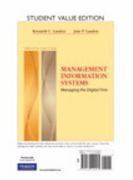Answered step by step
Verified Expert Solution
Question
1 Approved Answer
The Issue The coronavirus pandemic has endured for two years now, and chip manufacturing shortages are still affecting supply chains in industries around the world.
The Issue The coronavirus pandemic has endured for two years now, and chip manufacturing shortages are still affecting supply chains in industries around the world. Production times have been delayed, and products requiring semiconductors have become more expensive and increasingly scarce for consumers. Experts estimate that the chip shortage has cost the U.S. economy USD 240 billion in 2021. The CHIPS for America Act, passed last year, authorized federal investments in chip manufacturing. In June, the Senate set aside USD 52 billion in funding for domestic chip manufacturing. Congress authorized another USD 52 billion in subsidies for chipmakers, with USD 10 billion earmarked for fab projects (that is, manufacturing/fabrication facilities) and a cap of USD 3 billion per project. Intel recently committed USD 20 billion to build a manufacturing mega-site in Ohio. Construction is set to begin this year and the site is scheduled to be operational by 2025. Other microchip heavyweights investing in U.S. factories include Taiwan Semiconductor Manufacturing Co. (TSMC), spending USD 12 billion on a semiconductor factory in Arizona; Texas Instruments, throwing USD 30 billion into four plants in Texas; and Samsung, setting aside USD 17 billion for a chip plant in Texas. The European Union Commission recently adopted the European Chips Act, which secures EUR 43 billion in public and private funding to support research and investment in chip manufacturing. Of that sum, EUR 11 billion taken from public funds will directly fund semiconductor capacity support under a Chips for Europe Initiative. Under the Chips Act, a Chips Fund will support equity by facilitating access to finance for start-ups and scale-ups in the semiconductor industry to help them mature their innovations and attract investors. The European Union hopes this funding will promote microchip development and strengthen the bloc's position in the global semiconductor industry by doubling its share of global chip production by 2030. Countries are eager to establish "digital sovereignty"the ability to maintain technological independence from global supply chains. Globalization has led to companies building their supply chains across borders, intertwining national economies. During the pandemic, countries saw how crippling it was when they did not have multiple supply sourceswhen China first shut down, chip manufacturing for the world nearly halted. On the other hand, the current rise in nationalism is also making countries hesitant to work together to come up with any kind of long-term solution for worldwide supply chain issues. Why Is It News? The pandemic saw a surge in demand for medical devices and personal electronics, all of which contain semiconductor computer chips, meaning there weren't enough for carmakers. Ford halted or cut production at eight major plants, Toyota slashed worldwide production by 40% in 2021, while General Motors switched production to cars that didn't require those specific microprocessors. Since car manufacturing has slowed because of the chip shortage, the price of used cars has increased 24% over the past year. Like many other forms of manufacturing, chip manufacturing was shipped overseas because labor was cheaper and incentives were greater. The Semiconductor Industry Association (SIA) reports that, during its prime, it cost 30% more to build and operate a microchip manufacturing facility in the United States than in East Asia over ten years, partly because of enormous government incentives. Increasing automation in chip factories, plus new government incentives to encourage domestic manufacturing, allows companies to produce microchips in their home countries while still being cost-effective. The Ohio General Assembly recently expanded its tax incentives, allowing projects with more than USD 1 billion in investmentlike Intel's new manufacturing mega-siteto benefit from tax credits for up to 30 years. Communities in Ohio are speaking out because small businesses are not being given the same tax abatements and benefits as these multinational tech companies. While governments are trying to build up the area for manufacturing, the sites will largely be automated and won't add many jobs to the community. Small businesses are seeing costs go up locally (which will only increase if more traffic is being driven into the area), but they themselves see no tax incentives. The sand used to make semiconductors already comes from the U.S. South, so Intel believes some chips could be produced on domestic soil. Since domestic manufacturing of microchips doesn't insure against future supply chain disruptions (Intel chips manufactured in the United States are still sent to Asia for assembly, testing, and packaging), the push is largely for political reasons. Three-quarters of the world's semiconductor manufacturing capability is within the flight path of the Chinese Air Force, which national security experts believe is problematic, particularly in an era of growing geopolitical tensions. Analysts predict the chip shortage will likely continue into 2023, but J.P. Morgan estimates shortages will lighten up if industries invest in long-term solutions. Unfortunately, any boost in chip manufacturing will be slow to take root and will not likely help the current disruptions. Discussion Questions 1. How are different regions planning to address the chip shortage? 2. What does this chip shortage mean for domestic manufacturing, trade, and the overall supply chain? 3. How will these changes affect labour and consumers
Step by Step Solution
There are 3 Steps involved in it
Step: 1

Get Instant Access to Expert-Tailored Solutions
See step-by-step solutions with expert insights and AI powered tools for academic success
Step: 2

Step: 3

Ace Your Homework with AI
Get the answers you need in no time with our AI-driven, step-by-step assistance
Get Started


